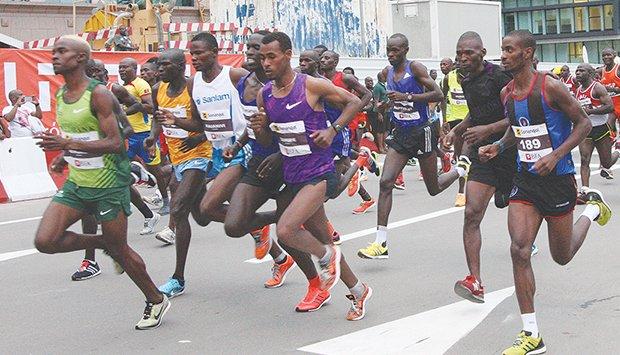Africa-Press – Angola. Three months after the usual date, the title of the 65th edition of the São Silvestre race is disputed today, at 18:00, by two thousand athletes of both sexes, over a distance of ten kilometers, starting at Largo da Mutamba and ending at Estádio dos Coqueiros .
Kenyan, Mozambican, Gambian and Congolese long distance runners give the competition an international character. With six decades of history, the race has become traditional in the streets of Luanda and the local population has the opportunity to see the best of the square and some foreigners run, who in this way give another competitiveness to the competition.
The ascent of the Prenda tunnel is the crucial point of São Silvestre, where the lungs are put to the test and the different platoons begin to be formed. From Rua da Missão, going downhill, the breath of fresh air allows runners to absorb more oxygen and print another speed.
Yesterday, at the technical meeting held at the Federation’s headquarters, the judges and timekeepers discussed what will be their performance before, during and after the race. The last inspection, held Thursday, validated the route.
Far from the heyday, in which great names in international athletics shone the race, highlighting the Eritrean Zersenay Tadese, with the best record (27 minutes and 44 seconds) and the Ethiopians Atsedu Tesfaye (27:47), Tilahun Regassa (27:50 ), Asmeraw Bekele (27:53) and Haile Grebelassie (28:53), this edition is deprived of the most renowned athletes.
The absence of elite runners can be a motivating element for the nationals, who intend at all costs to be part of the list of winners of São Silvestre.
In this edition, the federative squad headed by Bernardo João will award the winner US$3,000 or the equivalent in kwanzas.
São Silvestre starts at Largo da Mutamba, passing through avenues Amílcar Cabral, Revolution of October, Ho Chi Min, Alameda Manuel Van-Dúnem, Largo do Kinaxixi, Rua da Missão, Avenida 4 de Fevereiro, Largo do Baleizão, Rua Francisco das Necessidades and ends at the Coqueiros Municipal Stadium.
The international “Demósthenes de Almeida” meeting is held on January 2, at Estádio Municipal dos Coqueiros.
race history
São Silvestre began to be disputed in 1954, with only a national character. The first triumph went to Isidro Louro, representing Clube Atlético de Luanda.
Subsequently, António Esperança won in the editions from 1957 to 1960.
In the 1964 edition, leading figures in world athletics were invited to participate, initiating the internationalization of the race. At that stage, the Mozambican António Repinga was the first foreigner to win the São Silvestre de Luanda.
From 1985 onwards, the race was renamed Demósthenes de Almeida, in memory of one of the biggest drivers of national athletics. In 2002, the race was renamed São Silvestre.
The record for winning titles is shared between Angolan António Esperança and Ethiopian Berhanu Giurma, with four trophies each. Also on the list are Isidoro Louro and Fanye Vanzyl, with three each.
João Ntyamba, Aurélio Mity and Ana Isabel are the only Angolan winners of the post-independence race. Ethiopia is the country with the most titles won, in a total of 20. Angola added 15, Portugal has six, South Africa, Zimbabwe and Kenya, each with four, are in the immediate places.
Female participation began in the 1980s. With ten titles, Ethiopia leads the ranking, followed by Kenya with one less. Portugal (eight), Zimbabwe (three) and Angola (one) occupy the next places.
The race has already had several courses, some shorter and others longer. In the first editions, the race was restricted to downtown Luanda. After National Independence, the race approached the periphery.
In the late 1990s and early 2000s, the race moved closer to the suburbs and ended up at the Cidadela National Stadium, passing through Lueji a Nkonda, Ngola Kiluange, Soba Mandume and Brigada streets.
For More News And Analysis About Angola Follow Africa-Press






